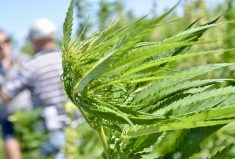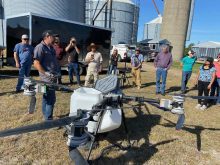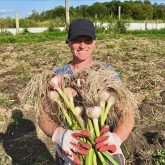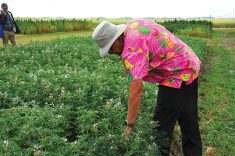James Frey of the Parklands Crop Diversification Foundation points at a stand of low-growing plants in a test plot south of Roblin. It’s a legume with potential as a feed crop for humans and livestock.
“This is a variety called the blue lupin,” he said. “It falls out on the same lines with faba beans, where there’s a higher tannin and a lower tannin. In countries like Australia, where it’s extremely dry, they grow lupin in a big way, almost entirely for human consumption.”
Lupins grow pods containing a pea-like fruit that dries down to something about the size of a beluga lentil. Frey says they’ve been experimenting with them for two years, with mixed results.
“We wanted to see if it has potential to produce what ultimately comes out like peas,” he said. “In some years we’ve had great success growing it. In other years we have had literally no plants coming up and my suspicion is that our seeding rate is just too low right now. I’d like to try this again and bump the seeding rate up.”
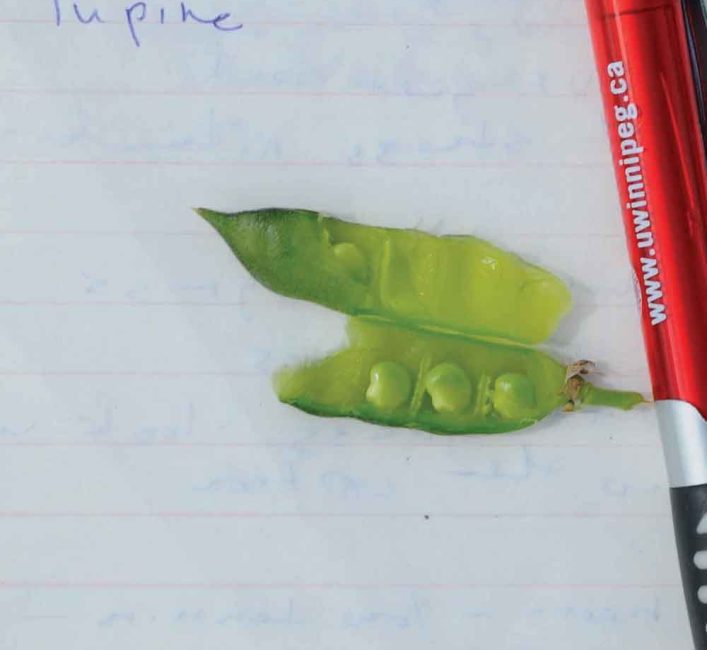
The foundation got the seed through a company that specializes in forage seeds. Lupin is often grown as part of a forage mixture or polycrop, in which its nitrogen-fixing capacity is useful.
“I also would like to find a variety that’s a little taller,” said Frey. “This feels kind of like a little short for most combines. I just wanted to point it out assuming that you haven’t seen it before.”
The flower is another part of the lupin’s charm. It’s popular with bees and could be a fine crop for pollinators.



